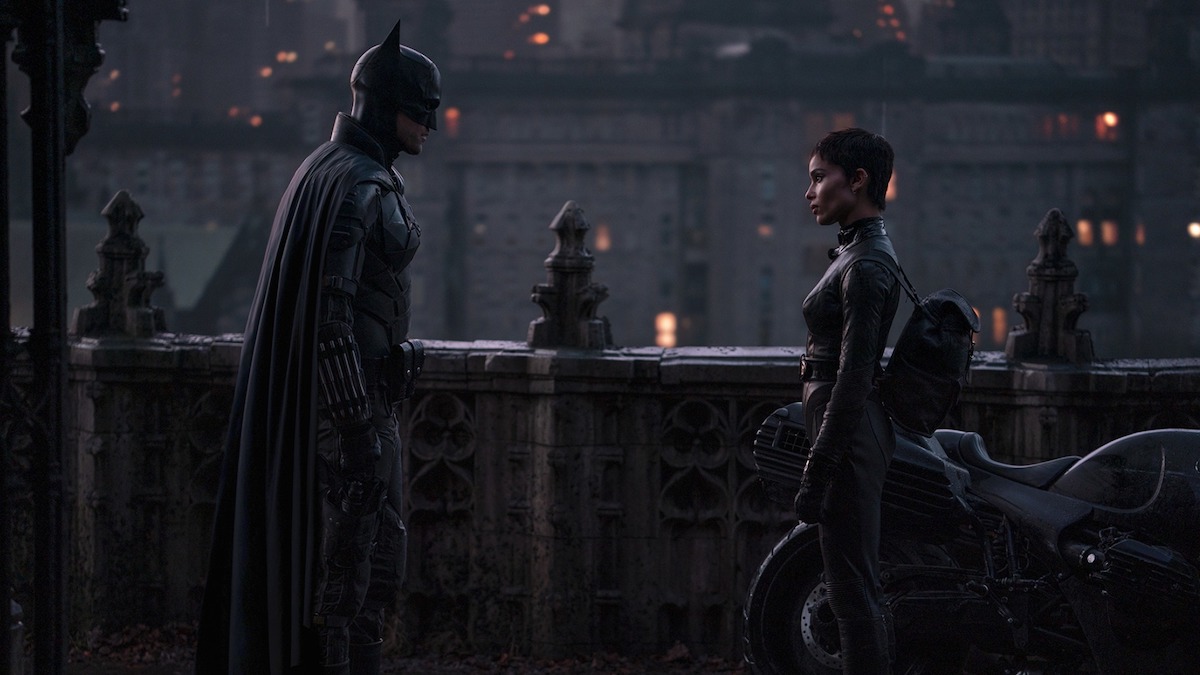The story begins on Halloween, almost exactly 20 years after the murder of Thomas and Martha Wayne. A new killer—an internet sensation, as it turns out—is on the loose, violently ridding Gotham City of its excesses. The Batman, now two years into his mission, must not only solve the mysteries behind the killings but end the killings themselves. He has a great ally in a youngish James Gordon of the Gotham City Police Department and soon also forms an alliance with a jaded bartender and cat burglar, Selina Kyle, as he uncovers the relationship of the Penguin with crime lord Carmine Falcone. Throughout the story, the Batman serves as the ultimate detective, trying to hew some kind of moral and ethical line, especially difficult as his methods and attitude creepily resemble those of the Riddler. The entire story takes place between October 31 and November 6, giving it a Stranger Things feel.
So much for a broad overview. Now things get personal. As a Batman geek working on a book entitled America’s Darkest Knight, I wanted so badly to be enthralled by this movie. I wanted Gotham to sweep me up and immerse me in its wallowing corruption. I wanted every nook and cranny of the city to ooze with anxious anticipation. I wanted villains that cried out with unadulterated anguish, and my Batman dark, gritty, mythic, and obsessed with justice. But I also wanted a fully realized Batcave and Batmobile, a few Batarangs, a fatherly Alfred, and a virtuous Wayne family legacy.
That is, I wanted desperately to fall in love with Matt Reeves’ The Batman. Was I asking too much?
After two viewings, I must admit, I’m only bemused by the spectacle of it all, wondering if those six hours (three per showing) will count against my already steep debt in purgatory.
There were things to love about the movie, I’ll admit. The acting—especially by Robert Pattinson as the Batman, Paul Dano as the Riddler, and Colin Farrell as the Penguin—was superb. That by John Turturro as Carmine Falcone, Zoe Kravitz as Selina Kyle, and Andy Serkis as Alfred, less so, sadly. Often, these latter three seemed stiff and merely going through the motions.
I also deeply appreciated that Reeves and the other creators took the comics very seriously, relying upon The Long Halloween, Year One, When in Rome, Hush, Gotham by Gaslight (the suit!), and No Man’s Land as obvious inspirations.
Gotham, to be sure, feels like Gotham. It’s not New York or Newark or Chicago. It’s a metropolis all its own, complete with all the nuances of Gotham. For example, the film references specific areas of Gotham detailed in the comics and also ties together the Waynes and the Arkhams as old and leading families of the city.
But there were as many, if not more, head scratchers as there were accomplishments in the movie. I’ll offer just seven.
First, at the film’s start, Bruce Wayne offers a voiceover that suits the film noir mood beautifully. “Two years in, and I’m a nocturnal animal … the Bat-Signal is not just a call, but a warning … Fear is a tool … I am the shadows … I’m vengeance … The city is eating itself. Maybe beyond saving, but I have to try to push myself.” It was chilling and excellent. The voiceover ends, however, minutes into the movie and doesn’t return until the conclusion, and then only to state something about the Batman being about hope rather than about vengeance.
Second, about two-thirds into the film, Alfred simply disappears, his last scene capturing a quick reconciliation with Bruce over a bizarre matter, the camera lingering on the two holding hands.
Third, the theme music for the Riddler is Franz Schubert’s “Ave Maria.” Seriously. Every time the psychopathic Riddler does something mischievous (and, truth be told, downright evil), the “Ave Maria” plays. Frankly, it’s diabolic. For some reason, the Batman’s theme (at least at the beginning and end of the movie) is inexplicably Nirvana’s “Something in the Way.”
Fourth, even though Gotham’s political, social, and economic structures are totally corrupt, the mayor elected in the movie—Bella Reál (Jayme Lawson)—suddenly demonstrates moxie, dedication, and downright bravado. It would’ve been far more appropriate to the themes of the story to have made her the mastermind manipulating all things behind the scenes, the devil’s devil, or, at the very least, to have her as a party to the overall corruption. As it is, she seems too good to be true, especially given the tone of the movie.
Fifth, Batman’s relationship with the police and first responders is schizophrenic, to say the least. In some scenes, he’s allowed access to a criminal investigations, working alongside the GCPD, but in others he’s a wanted fugitive, fighting his way through hordes of cops. As a movie, The Batman never makes clear what the true relationship is between the Caped Crusader and the Gotham authorities, weakening the overall atmosphere and plot. Indeed, the Batman’s relationship with the police changes so swiftly in the movie that you’re tempted to throw your hands up in sheer frustration. Is today the day he works with the police? Or is today the day in which the police attack him as an interfering vigilante? James Gordon, thankfully, remains a firm ally throughout the movie at least.
Sixth, this Batman (unlike, say, that of Zach Snyder) disdains the use of guns and seems to have a “no kill” rule, which has been the norm for Batman since the early 1940s. However, given the stunning brutality of the Penguin/Batmobile chase, it’s clear that Reeves’ Batman is totally fine with innumerable highway deaths.
Seven, and this one is surely personal, I despised the fact that Thomas Wayne was made out to be less than utterly virtuous. It’s been the fashion of the comics (and the novels) over the past decade to question Thomas’ motivations, but it has always struck me as essential to the character of Bruce Wayne that he live up to his father’s fine, aristocratic, and untarnished example.
There is some unfortunate dialogue regarding Wayne’s family as well. While not knowing that Bruce Wayne is the Batman, Selina Kyle, in a confessional moment in the movie, dismisses those murdered thus far (including Thomas Wayne from 20 years earlier) as “white privileged a—holes.” Further, when the Batman makes a totally appropriate response about ethics, choice, and morality, Selina replies, “Choices? Whoever you are, you had to grow up rich,” implying the poor have no choice but to bend or break the law.
Again, there are things to love and appreciate about this version of The Batman, but they are far and few between, riddled with the strange things just listed. This version of Batman is, at best, a shadow of Christopher Nolan’s The Dark Knight. If you really need to fall in love with Batman, Nolan’s version is the best. But I would also recommend Bruce Timm’s Mask of the Phantasm or any of his animated Batman series, as well as the most recent DC Animated films, such as Under the Red Hood or The Long Halloween. There you will find captured the true spirit of the Caped Crusader.

